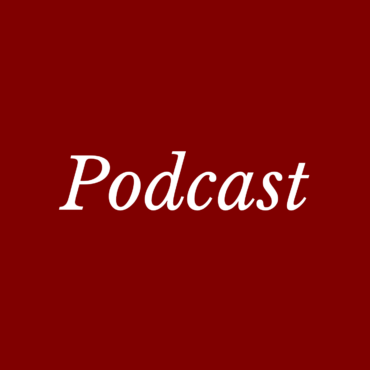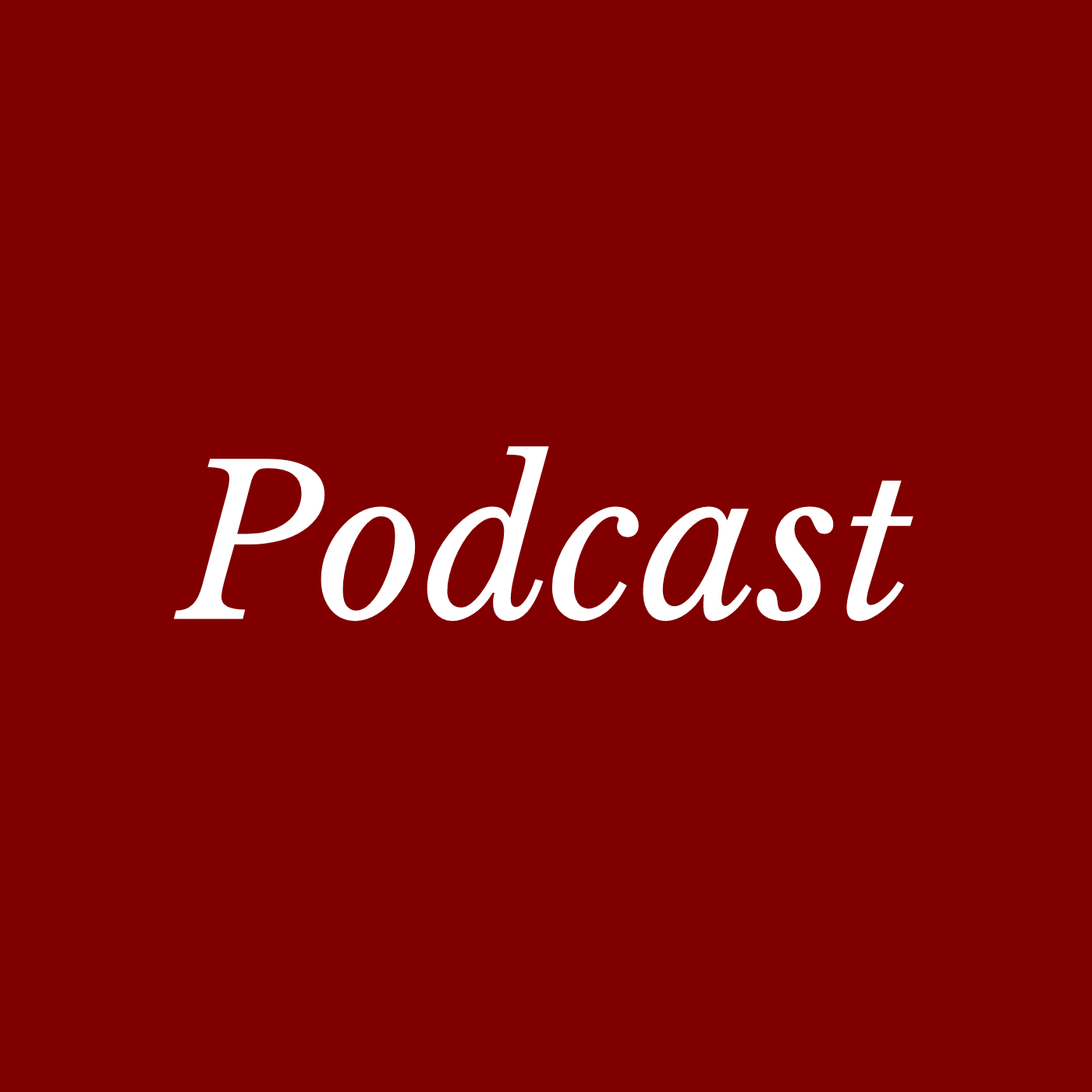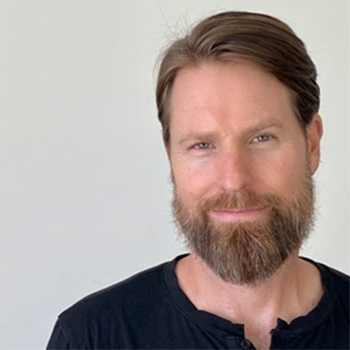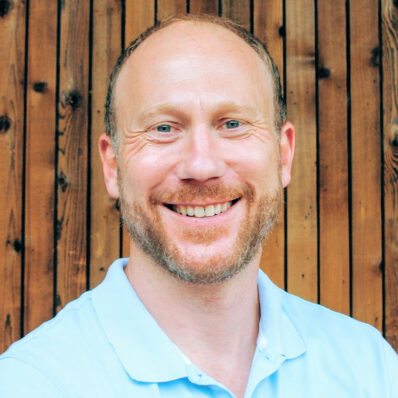Unknown Speaker 0:15
Well, hello, everyone, this is George G. And the time is right welcome today’s guest strong and powerful Nate camp Nate, are you ready to do this? L F, G. G, let’s go is the managing partner of curate partners Mid Atlantic region, their leading provider and talent solutions for the digital tech industry. Nate, I’m excited to have you on tell us a little about your personal lives more about your work, why you do what you do. Thank you, George, for having me. Appreciate it. Yeah, so I am, I live in the DC area just outside of DC in a town called Reston, Virginia live here with my wife, my three kids, Michael Benjamin, and Caroline and our dog Brody. And
Unknown Speaker 0:57
I will tell you, so I’ve been I’ve been in this whole industry for about 16 years.
Unknown Speaker 1:03
It’s, it’s a, it’s an interesting space, we’re dealing with people as our product.
Unknown Speaker 1:11
And, you know, I think a lot of people get sort of bored of their jobs for the industry over time. And this couldn’t be the farthest from the truth for what we do here. It’s a, you know, things evolve, people evolve, I can tell you that the pandemic has changed a lot of things.
Unknown Speaker 1:28
And I think I just enjoy it. Because after 16 years, I still run across situations I’ve never seen before, you gotta get creative, you got to solve problems. And I think the biggest sort of consistency across, you know, all these years is having that people connection. And, you know, really understanding what makes people tick, have empathy, see the other side of things. And if you do that, you can sort of conquer whatever situation you’re on.
Unknown Speaker 1:56
Nice. I appreciate that.
Unknown Speaker 1:59
So I’ve got two kids, Nate, and it’s James and Jack. And you’ve got Michael, Benjamin and Caroline. And it strikes me that they’re unique. They’re different in that you can shorten and do nicknames for your kids really easily, but not easily for mine. Do you call your kids by their full names? I do. I don’t know how long it’s gonna last. But I do. So Michael is still Michael. Benjamin, we try to keep as Benjamin but we hear people at school calling him Ben. I tried to correct but I think at some point, I was manual all my life until after college, and I had a job where it was easier to have a shorter name and Nate stuck. So I appreciate the longer names. Yeah, you kids like the nicknames are they are. Each one does have a nickname. Jack, we were calling him baby Jack, because he was baby. But now he’s three. And now it’s big guy, Jack. So like,
Unknown Speaker 2:59
so So Jack is his proper name, not his nickname? That’s right. Gotcha. And how old are the boys? There are now six and three. Okay, so financial data for sure. Yeah. Excellent. So talent solutions, what is the what does that mean? So
Unknown Speaker 3:17
we, we help companies
Unknown Speaker 3:21
identify and bring on
Unknown Speaker 3:24
what we call temporary staff. But when we look at temporary staff, we don’t really look at, you know, a four, six week things, somebody’s out with a flu. We do a lot with project work, whether it’s digital or data,
Unknown Speaker 3:38
where companies have something to get done over a period of time. If they do it with their current staff, you know, this is all within technology, current staff, it’ll take years and by the time they’re complete the this obsolete and they’ve got to do something else. And so there’s something called staff augmentation, where companies will say, Okay, we’ve got X number of staff, we could accomplish this much faster if we add this number of people. But at the end of whether it’s nine months, 18 months, they don’t have a need for those folks. If you bring on full time staff, it’s really hard to then downsize. And so this flexible model allows for them to bring in experts, people that can just, you know, roll up their sleeves, get the work done, with everybody understanding that at the end of this period, they’ll be moved on to something else out of the company, sometimes they stick and have to convert them. But it allows them to have that flexibility. And the people that are doing the work. They know that 12 months, 18 months, they’re gonna find something else that we help them find something else versus people hired in sort of, like permanent jobs, you know, and a lot of times people have 510 to 12 permanent jobs in their life. You know, this is just, I think a more accurate and realistic structure.
Unknown Speaker 4:57
How has the industry been trending, growing
Unknown Speaker 5:00
Unlike crazy staying the same,
Unknown Speaker 5:03
it has been growing I think steadily, there’s certainly a few blips with with major events in the last 20 years.
Unknown Speaker 5:11
I think in the last few years, a lot of people both on the candidate side, the the actual workers, and companies are much more into, hey, let’s, let’s make this a staff augmentation arrangement, it’s, it’s less risk on both sides. It gives people sort of responsibility or the ability to choose what they do.
Unknown Speaker 5:36
And it’s a lot, it’s a lot faster. You know, I think when, when you want to make a decision on a full time employee or a permanent employee, sometimes it takes months to find the right person. And in a flexible staff model, we can get somebody on board in two to three weeks. So I think with a lot of uncertainty, a lot of changes in the way people operate the technology needed. Just this model allows companies to think, make smarter decisions quicker.
Unknown Speaker 6:07
My perception would be that younger folks are more interested, or would be more attracted to what you’re describing.
Unknown Speaker 6:16
I think that’s as far as the population, yes. But I will say even 20 years ago, you have a lot of people moving this direction. And it’s something I know, I respect people that do this, I think it’s a it’s a fantastic way to go. And it’s a way to experience different companies, different cultures.
Unknown Speaker 6:36
But I think it would be stressful for me. So it’s not, it’s not for everybody, right. But there are people who 30 years in, have worked in temporary or staffing positions, all through their career. And they love it, they love the excitement of it, they love dropping in being somewhere for nine months. But it really brought experience. I think the younger generation, it’s interesting, because you’ve got sort of two factions, you’ve got people that yes, I want the flexibility, I want that gig work, I want to be in control. But you got other people depending on when they came out of college, and or high school or trade school. And depending on what the situation was, right? Then if they came out during the pandemic, or they came out during the 2007 2008 financial crisis,
Unknown Speaker 7:25
those those couple years really shape how they look at the professional world and what’s available to them. You know, there’s there’s a couple generations, couple pieces where they, a lot of people said, Hey, this is this is hopeless, it’s not hopeless. But when they came out, it seemed that way, and they sort of moved to whoever can bring them on, but they’ve got sort of a different feel of what professional life looks like, you know, 50 years ago, people would get a job. And that’s where they were till they retire. And they had pensions, and that was it. You know, 15 years ago, you had people that, you know, each job lasted three, four years, five years, and then move on to the next. Now we’re getting to a place where I think people are comfortable moving on to what’s next and protecting themselves and doing what’s right for their family. And it’s it’s interesting shift over the over the years. It is super interesting. In the hole. It’s interesting that it makes sense that the environment you come into when you’re going to the professional world leaving the student world will really have a dramatic impact on what how you view the workplace moving forward. And, and all that and then stigma is about job hopping. I think that, that that certainly has been a thing. Although it doesn’t really make sense that it would be but the through lines, I think it sounds like it’s really important that you really do need to know yourself and probably as the organization need to know the kind of person that you’re going to bring on.
Unknown Speaker 8:54
Yeah, and I think that’s, that’s the
Unknown Speaker 8:58
that’s the tough piece, I think about where we are. Right now, at this point in history. Over the last couple years, there’s there’s been this shift to remote work and you know, mid 2020, it was necessary, there was no other option. Unless you were doing something where you physically had to be there, whether it’s the factory or you’re in service or police or fire. Most people in the professional world work from home.
Unknown Speaker 9:24
And that was what people were thinking and first of all, thinking two weeks, three weeks max, then six weeks became six months, man a year and then a couple years into it. companies, a lot of companies that have said no no power mode, move to remote.
Unknown Speaker 9:41
You got companies now that are starting to bring people back in.
Unknown Speaker 9:45
And it’s a tough transition because you’re competing with companies that are saying no, you can be fully remote. And to me, I think remote work can really be efficient can mean you can get a lot of work done when there’s not
Unknown Speaker 10:00
All these other distractions at work. But I think the challenge with it is the lack of physical connection.
Unknown Speaker 10:08
Video This, this helps. But it’s not the same as shaking somebody’s hand or sharing a meal together, spending some quality time looking them actually in the eyes versus through a camera. And I think that’s a piece where
Unknown Speaker 10:21
it’s right or wrong. Without that happening, people jump right into just working together, but not having that same level of trust, and not really physically connecting with people. And people don’t give the benefit of the doubt to people as much as they did. Prior to this, there’s a lot more contentious things and I see it across the board, I see it with people that are managing resources, questioning the work, and then you go and talk to the person, they’re questioning the manager. And when you talk to each person, you get their perspective, you can see that just, they’re just not seeing eye to eye. And it will be as simple as you don’t need to be working with them 24/7 Or even in the same state. But I think if if people can get together,
Unknown Speaker 11:07
twice a quarter, and share a meal, it, it will change their relationships, which changes everything we do that we do every time I get together because I’m remote. And I’ve got a few people that I work with locally here in person.
Unknown Speaker 11:23
The majority of my company is up in the Boston area. And every time I visit them and spend a couple of days with them, I’m just refreshed, they’re refreshed, and our interactions are so much stronger. Following that, and I think that’s a that’s what companies I think are wrestling with how do we how do we do that? We just need to bring everybody in you don’t you just need to have some sort of connection occasionally, and then I think we’ll, we’ll close some of the gaps. I
Unknown Speaker 11:53
think that that makes all the sense in the world. And I think that there’s Do you think that that’s true just across society, and not necessarily even the workplace, the more we could just have a conversation with one another we realize, okay, maybe Nate’s not as much of a jerk as I thought he was a minute ago. Yeah, no, I think absolutely. I think it’s, I think that, for a lot of reasons, a lot of things happening. We’re very polarized right now. And when you don’t know someone, and you’re in discussion, most people’s goal in that situation, is to be right, and to prove the other person wrong. If you know the person, then you know, your people tend to start a little bit more with let me active, and let’s have a real discussion. But it’s it’s an art that I think we’ve we lost furs, for different reasons from, you know, the information age, having the things at our fingertips, that we no longer need to argue about something, we can just look it up. And so people lose, people lost that over the years. And then we moved to being remotely and not having that that physical connection. And I think it’s so many relationships will be stronger, so many situations would would end more positively, if people could just take a step back and hear the other person’s perspective. See it from their shoes, empathize with them. I mean, I feel like the world’s problems could be solved. If people just took that mentality. You know, if someone’s passionate about their feelings, it’s rooted somewhere in truth, or at least in what they believe. And if you can, if you understand that they are coming to you from a position of
Unknown Speaker 13:37
being belief and, and honest opinions, whether they’re incorrect or not, then you can say, okay, let’s let’s try to rationalize or at least respect the other person. But, man, it’s, it’s been declining, unfortunately, lots of factors involved in that.
Unknown Speaker 13:55
Certainly makes sense that the bigger companies probably are going to continue to either utilize the formula that you’re talking about the staff augmentation versus hiring more full time. So moving forward, and virtual is probably going to be a thing moving forward. A lot of folks just in different places.
Unknown Speaker 14:16
And you mentioned two times a quarter, and that certainly makes sense to me. Are there organizations that you’ve seen, you know, this is really could be a best practice, when we do bring these folks in? Is it just for social stuff? Is it for, you know, planning, how do you see a successful implementation of that?
Unknown Speaker 14:36
So I think it’s, it’s a mix there. A social aspect? Yes.
Unknown Speaker 14:42
But I think there should be some team building, which can seem contrived it can seem like, Oh, we’re just doing this game, but it allows people to work together in a fun way. But then also working, having a having a planning meeting, having a strategy session, and being in rooms with people that you’ve just met online.
Unknown Speaker 15:00
I, and people are rolled up their sleeves, their phones are off. And they’re just connecting with the people that they’re there with.
Unknown Speaker 15:07
That, that sort of
Unknown Speaker 15:10
vision that feeling returns with them when they go back to their remote workplaces. And again, the next video call like, again, what we work together, we solve this together as people, and it just, it can change.
Unknown Speaker 15:25
But yeah, I think I think just just doing it, you know, it’s funny.
Unknown Speaker 15:29
years ago, one of my mentors who was actually one of the partners that curate,
Unknown Speaker 15:34
I just moved into management. This was 2010. And, you know, I was going through what to do on one on ones what questions to ask how often to do it? You know, should I have a full job? And he made a comment that stuck with me all these years. And he said, when it when a team, it’s, it’s the quantity that counts, not the quality? Like, what do you get that wrong? Oh, it’s, here’s, here’s your thought on it. It doesn’t have to be a perfect interaction.
Unknown Speaker 16:06
It doesn’t have to be exactly what you get done. It could be doing one on one while you’re driving to the store, and you’re with the person you’re hanging out. And you’re asking questions. Just being with that person as people
Unknown Speaker 16:21
is is just as important, as you know what tactical things that you got done during that piece, you know, so when it comes to bringing people together, once a quarter, twice a quarter, however it’s done.
Unknown Speaker 16:33
It doesn’t have to be perfect. It just needs to happen. And the more that those things happen, the more people realize, okay, I’m dealing with someone to deal with their own set of problems. And, you know, I can see who they are, and I can interact with them better. It’s, you know, be be authentic with those people. And that’s, that’s, I think, what it accomplishes, it’s not, you know, here’s all the 12 things that we got done when we were together, it’s we’re together anything else. Beyond that is a bonus. Yeah, that makes a lot of sense. That sometimes I have a tendency to be too formulaic, and say, This is what we’re gonna do now. And then we’re gonna move on to the next thing
Unknown Speaker 17:13
that I was just thinking about actually driving into the store with somebody that you’re been meeting with virtually, but you’d never met. And then imagine you get a flat tire, and you need to change the tire with that person. Ultimate Team Building. Yeah, yeah, exactly. Maybe, maybe that’s yeah, we’ll just puncture some tires, before these meetings and put them in some real life, we’ll figure it out.
Unknown Speaker 17:37
That that 100% do it or pull them completely apart. Who knows.
Unknown Speaker 17:42
It’s funny you say that, though. I have found
Unknown Speaker 17:46
in any situation. And obviously, you don’t want to do these things intentionally. But
Unknown Speaker 17:51
some of my best client relationships have gone with early on the relationships, you know, the first six months or something like that, something happens. That’s not good. We screw up, put the wrong person on site. It happened to me early in my career. And it was just it was it was not a right fit, we all thought it was I was mortified. And I went to him. And I said, I am so sorry, I will make this right. And we worked our tails off and found the right person around the clock till we got the right person on site, thinking maybe I can save the relationship back to where it was or where it was or have a chance. And what it did is it lost that relationship. And as someone I still talked to today, 15 years later, and we did a ton of business together. And it’s sometimes how you interact when things don’t go right because things aren’t always gonna go right. And if you can own it, and you can be vulnerable if you can apologize and then say what you’re gonna do to resolve it and then do that thing. And then that’s where people say, Okay, I’m working with someone that I trust that’s gonna do the right thing in the face of disaster or a tough situation. But I think that’s both from the work sort of perspective and then in life I look back on tough situations in life person I solved it with or sold it for they sold it for me. Those are those strong bonds that you can’t get without some sort of conflict, you know, and those those are opportunities. Yeah, share diversity is powerful thing. Love it.
Unknown Speaker 19:31
Well, Nate, thank you so much for coming on. Where can people learn more about you? How can they engage with you and curate partners?
Unknown Speaker 19:38
Well, George and thanks for your time I really appreciate it. So you know we’ve got a website curate partners.com LinkedIn is going to be the best way to reach me you can email me at Nate dot camp with a que que MP at Charity partners.com Find me on LinkedIn and I think LinkedIn is a great connector of people. But But look
Unknown Speaker 20:00
Of course there, but love to connect with any of your listeners. Excellent. If you enjoyed as much as I did, donate your appreciation and share today’s show with a friend who also appreciates good ideas, check out curate partners.com and then find Nate on LinkedIn. We’ll link all of those in the notes in the show. Thanks. Good night. Thanks, George. And until next time, remember, do your part by doing your best





